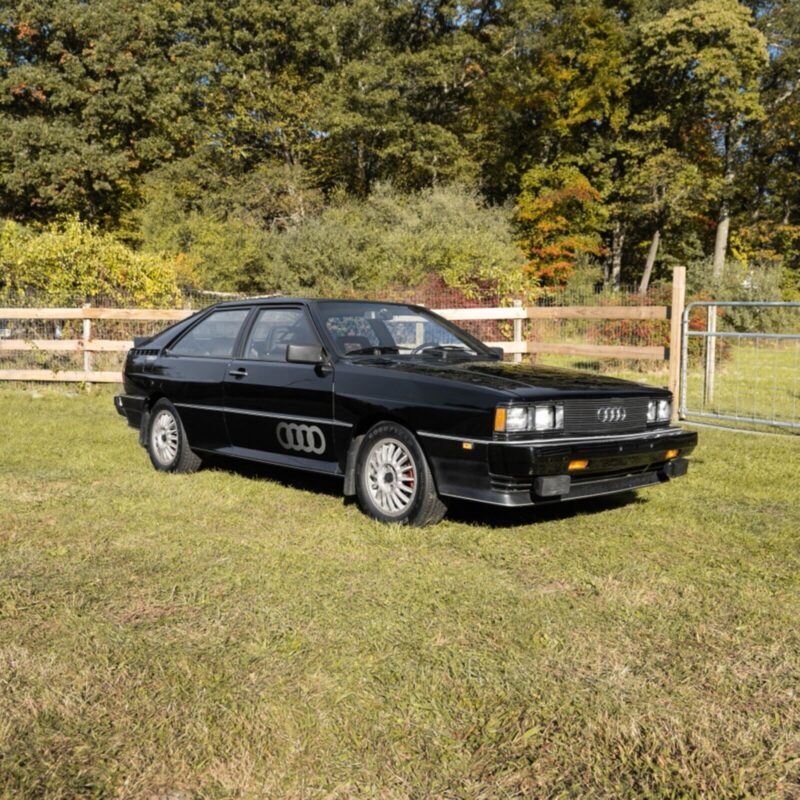
Back in September 2021 I took a look at a 1983 Quattro. It’s back again looking a bit more stock and now with a $82,500 asking price on eBay. For those counting, that’s $33k more than a few years ago.
Enthusiasts Blogging Our Favorite Classifieds

Back in September 2021 I took a look at a 1983 Quattro. It’s back again looking a bit more stock and now with a $82,500 asking price on eBay. For those counting, that’s $33k more than a few years ago.
This slick ’85 Quattro is still available, now with much better photos and an asking price that dropped to $75,000.
For U.S. Quattro fans, ’85 models are a bit special as they held numerous upgrades over the prior models. Like the rest of the Type 85/B2 lineup, those included revisions to the exterior, most notably the slanted grill and color matched spoiler, but also inside a new dashboard and revised seat fabric patterns. Like the ’84s, wheels were 8″ Ronals, and the more reliable fuse box was also carried over with the upgrades.
A few unique colors were offered on the ’85 up models, but since importation ended after one ’86 made it here, all colors are a bit special. Unique too was the headlight treatment, which had chrome aero bezels to match the grill. A total of only 73 of these upgraded 85s (plus the one 86) made it to the U.S., and they’ve pretty much always been the most sought of the scant 664 original Quattros sold here. This particular ’85 comes to market looking minty fresh in what appears to be Tornado Red.
Predictably, as it did with Mercedes-Benz Pagodas, Porsche 930s, 80s BMW M products and the original GTI, the quick rising of selling prices for the Audi Quattro has continued to bring good examples to market. Where we used to wait seasons between seeing any at all, today you seem to be able to view at least one pretty good one on the market at any given time.
There are those that say you can’t really compare the Quattro to the M3, or even the 911 – though the pricing was quite similar. But isn’t that the point? In period, the other car you could have bought for the same money as a Quattro was a basic 911. And the market spoke: in 1983, Audi sold some 240 Quattros in the U.S.. Porsche, on the other hand, traded 5,707 911SCs between the Coupe, Targa and new Cabriolet models. There was basically no market overlap with the other two major contenders – the 944 Turbo and the M3. Both those cars, and the 911, were finished to a higher level of quality with better components, arguably, but the real difference was the type of owner who bought the Quattro versus the 911. These cars were built to be used and abused, and many were.
Today’s example wears LA3A Mars Red that was shared with the A1 and early A2 chassis Volkswagen GTI and GLIs (along with a few others), but is less frequent to see on the Quattro than the color that replaced it in 1984 – LY3D Tornado Red. It appears to defy the odds and be a survivor worthy of a closer look:
Watch out Quattro, here comes the Golf!
While in the 1980s if you bought any of the branded ‘quattro’ systems you basically got the same drivetrain no matter what model you jumped in, the same was not true at corporate sibling Volkswagen. To add all-wheel drive to its lineup, VW had to incorporate three distinct systems all of which fell under the moniker ‘syncro‘. As just discussed in the T4, the T3’s system was a viscous coupling setup sending power forward with twin locking differentials. The B2 Passat shared its platform with the Audi B2, so there the all-wheel drive syncro was really just a re-badged generation 1 quattro system. But in the A2 chassis, a different viscous coupling setup engineered by Steyr-Daimler-Puch helped to transfer power rearward from the transverse engine when the front wheels slipped. The engineering was pretty trick, but underneath it all it was pretty much just a standard Golf – albeit one with potential.
So in the late 1980s when Volkswagen Motorsports wanted to enter Group A racing with the new all-wheel-drive Golf, it needed to build more than just race cars if they wanted a mean motor in it. It was homologation at its finest. Okay, maybe not, but build more they did, with at around 5000 road-going units planned of what was dubbed the Rallye Golf.
Defined by its rectangular headlights with cooling slats underneath, the Rallye continued the I’m a race car on the road … SHHHHHHH! theme with typical 1980s box-flared fenders. The Sebring alloy wheels were also seen on U.S.-bound Corrados. Despite the racer looks, the extra performance of the 1H G60-supercharged, 1.8-liter 8-valve inline-4 rated at 158 horsepower wasn’t enough to overwhelm the additional mass of the rear drive system, and, consequently, a well-driven GTI 16V would be quicker to 60 and around a track. But BOXFLARES!
Consequently, though the Rallye may not win the VW drag race, it won the hearts of enthusiasts. This tribute plays into that with a visual recreation of the Rallye – lacking the viscous coupling setup, but with a lot more motivation under the hood: